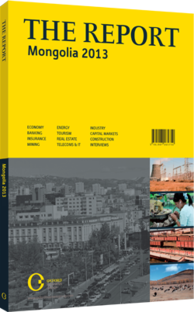Tending the fields: Ambitious programmes to jump-start an under-regulated sector
For years following the collapse of the Soviet Union, Mongolia pursued a relatively hands-off approach to agriculture. To a certain extent, this was just another element of reform, part and parcel with the end of centralisation. It was also a practical choice. The country is too big, and at the time too poor, to micromanage from the capital. The strategy was for Ulaanbaatar to write high-level legislation and regulation and leave implementation up to local authorities. This style of governing led to a number or problems, such as overgrazing and lack of livestock management as local administrators were invariably inclined to bend the rules. But as in many other arenas, the government is beginning to re-evaluate its tactics and become more involved. Agriculture is of particular concern, with a general understanding that the development of this sector is vital to avoiding overdependence on the mining industry. The country risks getting hollowed out in the pursuit of mineral wealth, and efforts are being made to prevent this. At the same time, the revenues brought in by mining will allow the national government to be more active in the management of the hinterlands. Regulatory efforts that may have been out of the question a decade ago due to lack of funds are now looking more reasonable as the government increasingly has the wherewithal to enforce the laws it passes.
DETAIL ORIENTED: Over the past five years, official policies and programmes related to agriculture have included the Crop-3 programme (2008-10), the State Policy Towards Herders (2009), the National Food Security Programme (2009) and the Mongolian National Livestock Programme (2010-21). All these plans are notable for detailed requirements and recommendations. The State Policy Towards Herders focuses both on general social security measures and practical initiatives that are expected to increase production and quality and establish better marketing networks, and calls for collaboration between the national and local government as well as international organisations. During the first stage, from 2009-15, the goal is to raise pastoralists’ incomes by 50%, and provide 70% of herders with health insurance and 50% with social security.
The Mongolian National Livestock Programme is equally ambitious. It mandates selective breeding, the creation of an animal registration database, certification that animals are disease-free, the protection of state land as reserve and the collection of pasture fees. It is particularly prescriptive in that it sets out very specific targets and precise timelines: the percentage of registered animals should rise from 0.3% in 2008 to 50% in 2015; the amount of low-micron wool should be increased from 3.9 kg per animal in 2008 to 4.4 kg in 2015; and the percentage of horses free of equine infectious anaemia is targeted to reach 100% by 2015.
OTHER MEASURES: A large number of other policies and programmes have been put into place. The state is continually refining its approach to the management of agricultural and related assets. Environmental protection laws are of particular interest, and in May 2012 they were comprehensively updated. In a legal overhaul, 18 laws were consolidated into eight, and two new ones were added. While the legislation focused on mining, it still held enormous importance for agriculture as it established the rights and responsibilities of stakeholders and significantly improved regulation, increasing the chance of implementation.
REGULATION: Further regulation and better enforcement seem to be under way. The Mongolian National Chamber of Commerce and Industry signed a memorandum of understanding with the Mongolian Agricultural Association that outlines cooperation in implementing policies and developing laws in favour of the sector. The agreement also covers areas such as improving financial conditions and upgrading technology. Most importantly perhaps is the first agricultural census conducted in May 2012. It was conducted over and above the annual livestock census and will provide better data for overall planning purposes. This news suggests a higher degree of involvement by the government and a desire to more closely monitor the sector.
You have reached the limit of premium articles you can view for free.
Choose from the options below to purchase print or digital editions of our Reports. You can also purchase a website subscription giving you unlimited access to all of our Reports online for 12 months.
If you have already purchased this Report or have a website subscription, please login to continue.

